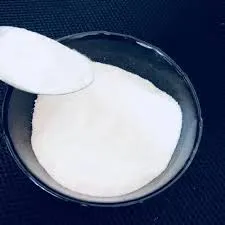
Novemba . 25, 2024 01:18 Back to list
hec vs hpmc
Exploring the Differences Between HEC and HPMC A Comprehensive Analysis
Hydroxyethyl cellulose (HEC) and hydroxypropyl methylcellulose (HPMC) are both water-soluble polymers derived from cellulose, which have found extensive use in various industries, including pharmaceuticals, cosmetics, and food production. Despite their similar origins and chemical properties, these two compounds exhibit distinct characteristics that make them suitable for different applications. This article aims to delve into the key differences and similarities between HEC and HPMC, shedding light on their structural, functional, and practical properties.
Chemical Structure and Properties
HEC is a derivative of cellulose formed through the ethylene oxide reaction with cellulose, resulting in ethyl groups being introduced into the cellulose backbone. This modification enhances its solubility in water at various temperatures, thus creating a thickening agent widely used in various formulations.
In contrast, HPMC is synthesized through the reaction of methyl chloride and propylene oxide with cellulose, introducing both methyl and hydroxypropyl groups into the structure. This dual modification allows HPMC to possess enhanced thermal stability and lower solubility in hot water compared to HEC, which makes it useful in applications that require controlled viscosity at elevated temperatures.
Viscosity and Solubility
One of the most critical aspects of HEC and HPMC is their viscosity profiles. HEC typically imparts a higher viscosity at lower concentrations, making it especially useful as a thickener in cosmetics, personal care products, and pharmaceuticals. Its ability to form stable gels at relatively low concentrations is a significant advantage in applications where transparency and smooth texture are paramount.
hec vs hpmc

HPMC, on the other hand, tends to exhibit a more gradual increase in viscosity with concentration. This property, along with its unique temperature-related solubility, makes it a preferred choice for applications such as controlled-release drug formulations and food products where the thickness and texture may need to vary with temperature.
Applications
The applications of HEC and HPMC can be seen across different industries. In the pharmaceutical sector, HEC is often used as a binder and thickening agent in ointments and gels due to its gelling properties, while HPMC is frequently employed as a coating agent for tablets and in sustained-release formulations, given its ability to create a barrier that controls the release rate of the active ingredients.
In the food industry, HEC serves as a texturizer, stabilizer, and emulsifier, contributing to the mouthfeel and overall quality of food products. In contrast, HPMC is utilized in gluten-free baking, where it improves the texture and elasticity of dough, enabling better bread structure. It is also a key ingredient in various low-fat and sugar-free products due to its water-retaining properties.
Conclusion
In summary, while both HEC and HPMC are valuable cellulose derivatives with overlapping applications, their distinct chemical structures and properties dictate their suitability for different uses. HEC is celebrated for its high viscosity at low concentrations and its ability to create smooth, stable gels. In contrast, HPMC's unique solubility characteristics and viscosity behavior allow for its broader utilization in pharmaceutical and food applications requiring temperature sensitivity and controlled release.
Understanding these differences is crucial for formulators and manufacturers aiming to harness their properties effectively. Whether in the realm of cosmetics, pharmaceuticals, or food production, selecting the appropriate polymer based on the specific demands of an application can significantly influence the product's performance and consumer satisfaction. As research and development continue in this field, the potential for innovative applications of HEC and HPMC remains vast.
-
Unlocking the Benefits of HPMC Products: A Gateway to Versatile Applications
NewsAug.07,2025
-
Unleashing the Potential of HPMC Ashland: A Comprehensive Look
NewsAug.07,2025
-
Tile Bonding Cellulose: The Key to Superior Adhesion and Durability
NewsAug.07,2025
-
Hydroxypropyl Methylcellulose Powder: The Versatile Component in Modern Pharmaceuticals
NewsAug.07,2025
-
Hydroxyethyl Cellulose: The Versatile Solution for Various Industries
NewsAug.07,2025
-
Hydroxyethyl Cellulose (HEC): The Versatile Polymer for Various Applications
NewsAug.07,2025







